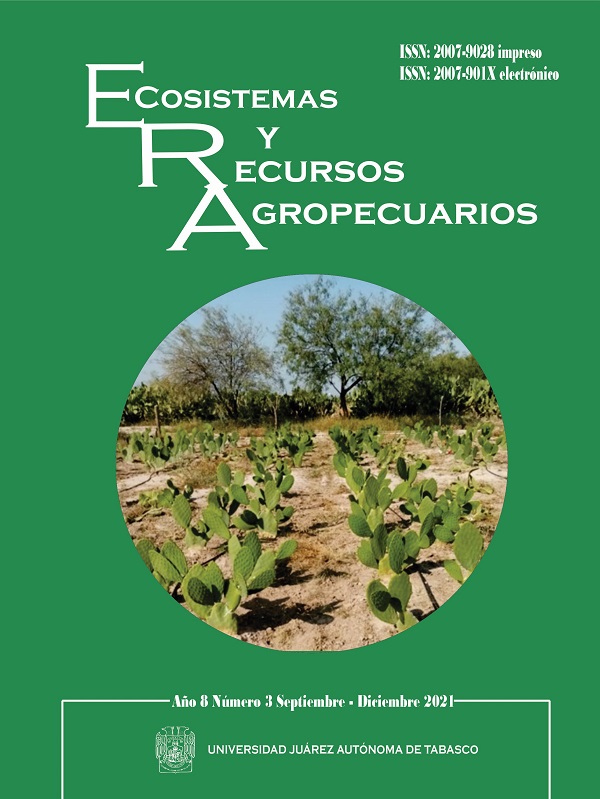Morphometric analysis of biotypes A, B, and Q of Bemisia tabaci from the state of Sinaloa, Mexico
DOI:
https://doi.org/10.19136/era.a8n3.2753Abstract
The whitefly Bemisia tabaci is a complex of species of importance for the agricultural industry due to the damage it causes by more than 50% in vegetable crops. In order to relate the morphological variations with the biotypes of B. tabaci, three samples of populations were collected from the municipalities of Mocorito, Elota and Culiacán of the State of Sinaloa, Mexico, and were genetically identified using the gene (mtCO-1) like biotypes A, B and Q respectively. The morphometric study was carried out with 30 individuals of each biotype and the data obtained were subjected to an analysis of variance and Tukey's test. It was obtained that biotype B presented greater length and width in all instars, followed by biotype A with statistically significant differences of the 2nd, 3rd instar and "pseudopupa" between the biotypes, finally, biotype Q exhibited the smallest dimensions.
Downloads
Downloads
Published
Issue
Section
License
Copyright (c) 2021 Ecosistemas y Recursos Agropecuarios

This work is licensed under a Creative Commons Attribution-NonCommercial-ShareAlike 4.0 International License.
Aviso de copyright
Los autores que se envían a esta revista aceptan los siguientes términos:
una. Los autores conservan los derechos de autor y garantizan a la revista el derecho a ser la primera publicación del trabajo con una licencia de atribución de Creative Commons que permite a otros compartir el trabajo con un reconocimiento de la autoría del trabajo y la publicación inicial en esta revista.
B. Los autores pueden establecer acuerdos complementarios separados para la distribución no exclusiva de la versión del trabajo publicado en la revista (por ejemplo, en un repositorio institucional o publicarlo en un libro), con un reconocimiento de su publicación inicial en esta revista.
C. Se permite y se anima a los autores a difundir su trabajo electrónicamente (por ejemplo, en repositorios institucionales o en su propio sitio web) antes y durante el proceso de envío, ya que puede conducir a intercambios productivos, así como a una cita más temprana y más extensa del trabajo publicado. (Consulte El efecto del acceso abierto).


